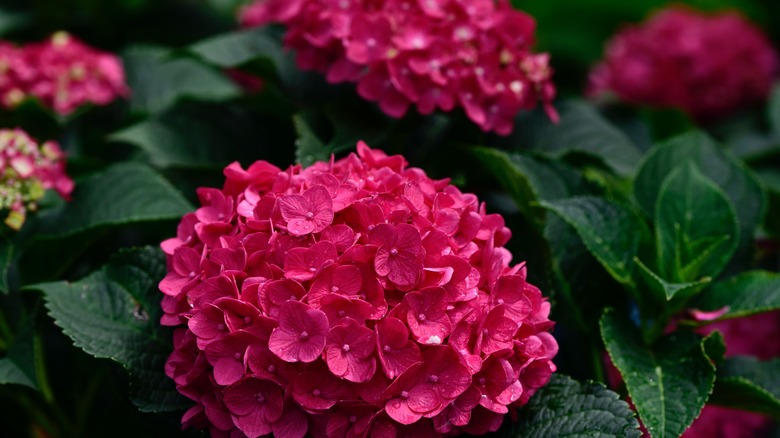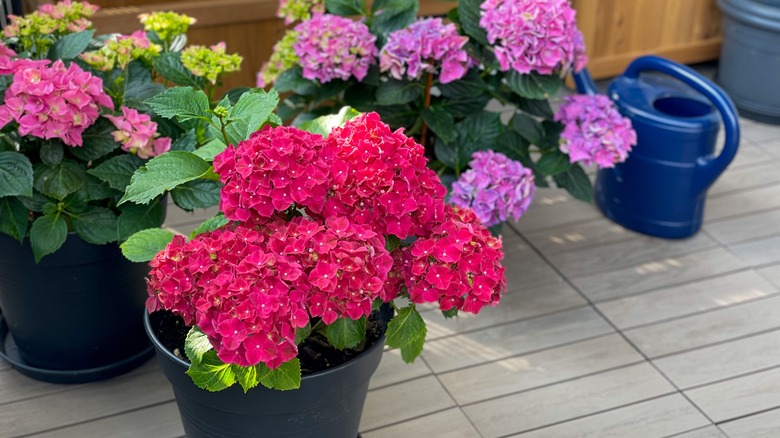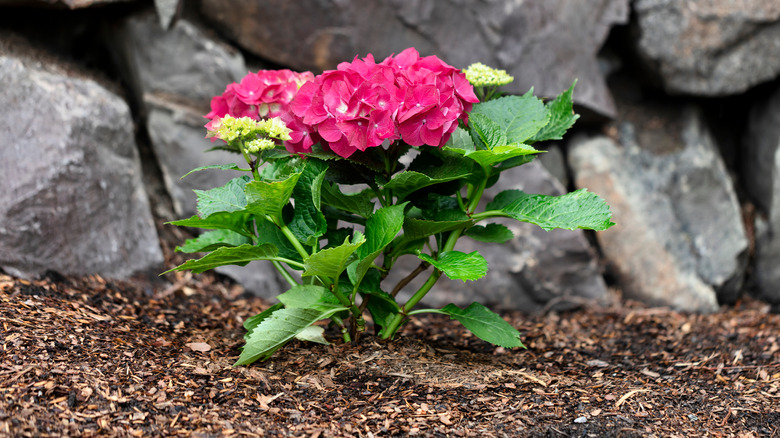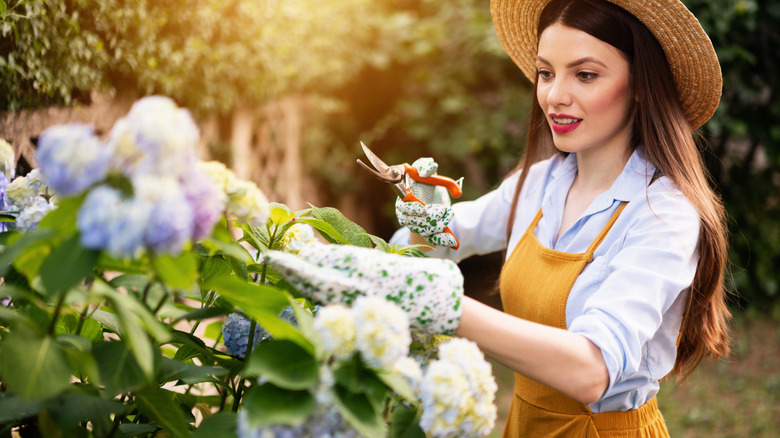How To Keep Summer Crush Hydrangeas Happy In Intense Summer Heat
When winter is over, the beginning of warmer weather signals the promise of everything that's yet to blossom and bloom. The change in season can bring a new set of headaches for gardeners, though. Summer can mean dry air, scorching temperatures, and those pesky pests that always want to munch on everything in your garden. Fortunately, there are a number of ways to help your flowers survive a heat wave and ensure they continue to thrive throughout the season. Moisture, temperature control, and soil health should be at the top of your list when it comes to keeping your Summer Crush hydrangeas happy during the summer heat.
The most important part about your plan to combat summer heat is timing! If you see temperatures in your region are set to rise significantly, you need to get a head start on summer-proofing your hydrangeas. The best thing about Summer Crush hydrangeas is that they're suitable for planting in many places: as a small focal point in the center of your garden, in a potted container in a small garden or apartment, or along a border as part of a larger landscape. In any case, your flowers should get the best care no matter where you have them. Follow these simple tips to keep your flowers safe from the summer heat.
Keep your Summer Crush hydrangeas well hydrated
The first concern for gardeners when temperatures rise is hydration. No gardener enjoys seeing their hydrangeas browning and wilting in the heat. These flowers prefer moist, fertile, well-draining soil, so newly planted flowers need to be watered frequently to ensure they're off to a great start. Established hydrangeas need to be watered well once a week, but you may need to water your Summer Crush hydrangeas more frequently if they're going to survive the hot and dry conditions of the summer.
Be mindful of where and when you water. The best method of watering your hydrangeas is to water them directly into the soil, avoiding the leaves. Water your hydrangeas early in the morning or late in the afternoon. Employing a drip irrigation system will allow your plants to remain hydrated without droplets on the leaves, which could encourage diseases such as Corynespora leaf spot.
Get your hands dirty and feel the soil beneath your flowers. Press into the soil and rub some of it between your fingers; that will tell you how wet or dry it is. You don't want your flowers so wet that they are sitting in water, but also avoid letting your soil dry up below the surface. Summer Crush hydrangeas planted in containers can dry out quicker because of the drainage system in potting containers, so watering them more frequently will help to keep the soil hydrated for longer.
Insulate your flowers
It may sound strange to say you need to insulate your flowers in the heat, but it can protect your flowers from all the external attacks they could encounter. One spot that is particularly vulnerable is the soil. Mulching around the base of your hydrangeas will ensure that the soil can retain moisture by slowing down evaporation and reducing the amount of water lost to runoff. It will also help to keep your plants cool by regulating soil temperature.
Some gardeners may prefer using inorganic mulch, like pebbles or gravel, to deter snails and slugs from in-ground flowers, but Summer Crush hydrangeas respond better to organic mulches, like leaves or wood chips, which will in turn feed the plants. Avoid mulch coming into direct contact with tree trunks, shrubs, and younger plants.
The last thing your flowers need when they're trying to survive the scorching temperatures is an opportunistic weed trying to rob them of the little water and nutrition they're fighting to absorb. Mulch is great for providing a blanket of protection against any weeds that may emerge from the soil. It's good to know how to identify common garden weeds so you know what you're looking for.
Hold back a little bit
While you may be on a mission to protect your hydrangeas from the soaring temperatures, you also don't want to become overzealous. If you're worried about whether your flowers are getting the chance to absorb enough nutrients, be aware that Summer Crush hydrangeas respond well to a slow-release fertilizer in spring. Check the packaging to make sure your fertilizer contains a high percentage of phosphorous, which is great for ensuring vibrant blooms. But don't panic and become heavy handed when fertilizing your hydrangeas. Too much fertilizer can result in too much nitrogen in your soil, which can burn the root system, stunt your Summer Crush hydrangeas, and cause dense foliage without blooms.
Summer Crush hydrangeas rarely require any pruning, but if you spot any brown and crispy leaves or flowers, simply remove them to avoid your flowers looking unsightly or having the damage spread to other areas of your plant. If your hydrangeas are potted, you can fix the problem of your hydrangea flowers browning and crisping by moving them to other parts of your yard, where they may do better in the shade and benefit from improved air circulation.



